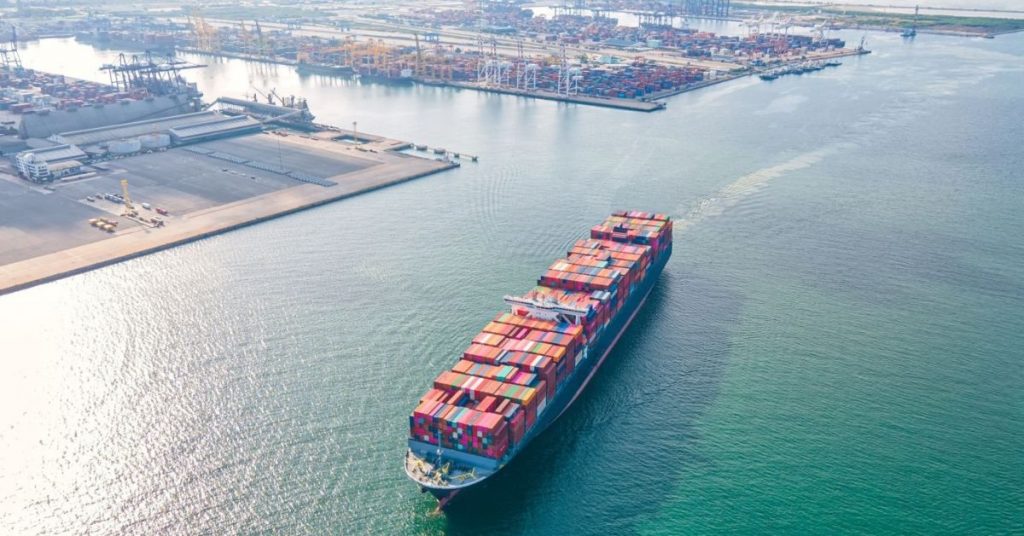A new insight brief from the Getting to Zero Coalition and the Global Maritime Forum suggests that the International Maritime Organization’s (IMO) recent policy framework has the potential to catalyse a transition to scalable zero-emission fuels—but only if it is supported by effective incentives and increasingly stringent enforcement mechanisms.
Titled “IMO’s policy measures: What’s next for shipping’s fuel transition?”, the brief combines Total Cost of Ownership (TCO) modelling by UMAS and University College London with feedback from over 30 industry stakeholders. It assesses investment and operational pathways in light of the IMO’s adoption of global fuel intensity (GFI) factors and financial penalties for non-compliance. These steps, once implemented, would make shipping the first global sector subject to binding greenhouse gas regulations and emissions pricing.
While multiple pathways to compliance remain open, the report notes that the IMO’s escalating GFI targets and penalties are expected to gradually steer the industry away from fossil fuels—such as LNG—and toward zero-emission alternatives, particularly e-fuels derived from green hydrogen.
Jesse Fahnestock, Director of Decarbonisation at the Global Maritime Forum, cautioned that although the IMO’s new rules represent significant progress, scalable alternatives must be commercialised in time to avoid future supply bottlenecks. “The IMO’s new framework is a historic step forward, but unless e-fuels become competitive early on, there is a risk that the sector will run into bottlenecks as its decarbonisation efforts scale up,” Fahnestock said.
Ammonia Positioned as Leading Fuel by Late 2030s
According to the analysis, dual-fuel vessels capable of running on both LNG and ammonia are expected to be the most cost-effective solution through the mid-2030s, with ammonia—particularly blue ammonia—emerging as the lowest-cost option from 2037. Blue ammonia is produced using hydrogen derived from fossil fuels combined with carbon capture technology.
While synthetic e-fuels have the highest potential for long-term decarbonisation, the report finds they are unlikely to be cost-competitive before 2040 without targeted policy rewards. Even so, conventional fuels are projected to become significantly more expensive than LNG and ammonia in the coming decade, further strengthening the case for alternative fuels.
Given the long-term nature of fleet investments, ordering dual-fuel ships compatible with future zero-emission fuels is already viewed as a strategically sound move. Fahnestock noted, “When considering the long-run demands of decarbonisation, ordering dual-fuel vessels capable of running on e-fuels already looks like a smart decision. But future adjustments to the policy can do a lot to encourage investment in e-fuel production facilities.”
Industry Caught Between Short-Term Costs and Long-Term Risks
Insights from industry interviews reveal a split in strategy. Many shipowners are taking a cautious “wait and see” approach—opting for short-term cost savings by running existing vessels on biofuels or LNG—due to uncertainties in regulation, fuel availability, and market demand. Others are taking proactive steps by investing in dual-fuel ships and preparing to leverage the emerging compliance mechanisms.
The IMO’s policy structure introduces annual GFI targets for 2028–2035 and for 2040, based on a tiered compliance model. Ship operators can meet the targets directly, fall within under-compliance thresholds (with penalties), or exceed the requirements and generate surplus units (SUs). Compliance options include switching to lower-emission fuels, paying into a system of remedial units (RUs), or trading with over-compliant vessels. Zero-emission ships will receive financial incentives, though the specifics are still to be defined.
Fahnestock concluded, “We now have a regulatory foundation, but further developments and adjustments are needed if e-fuels are to become viable at an early enough stage to realise the industry’s decarbonisation ambitions. While doing nothing is no longer an option, the rules still need to be shaped in a way that incentivises the investments needed for shipping’s future.”
Tags: Decarbonisation, Getting to Zero Coalition, Global Maritime Forum, Green Hydrogen, Maritime



Recent Posts
Goltens Partners with Orcan Energy to Expand Marine Waste Heat Recovery Solutions
NWSA Launches First Incentive Program for Zero Emission Trucks in Washington
IHI and Vopak Partner on Ammonia Terminal Development in Japan
Chimbusco Pan Nation Completes First B30 Marine Gasoil Delivery in Hong Kong
ITOCHU Announces Newbuilding Order for Ammonia Bunkering Vessel
India Launches Incentive Scheme for Electric Trucks under PM E-DRIVE Initiative
Royal Caribbean Welcomes LNG-Fueled Star of the Seas to Its Fleet
Swire Shipping Launches ‘Voyage to Zero’ to Help Customers Cut Scope 3 Emissions Swire